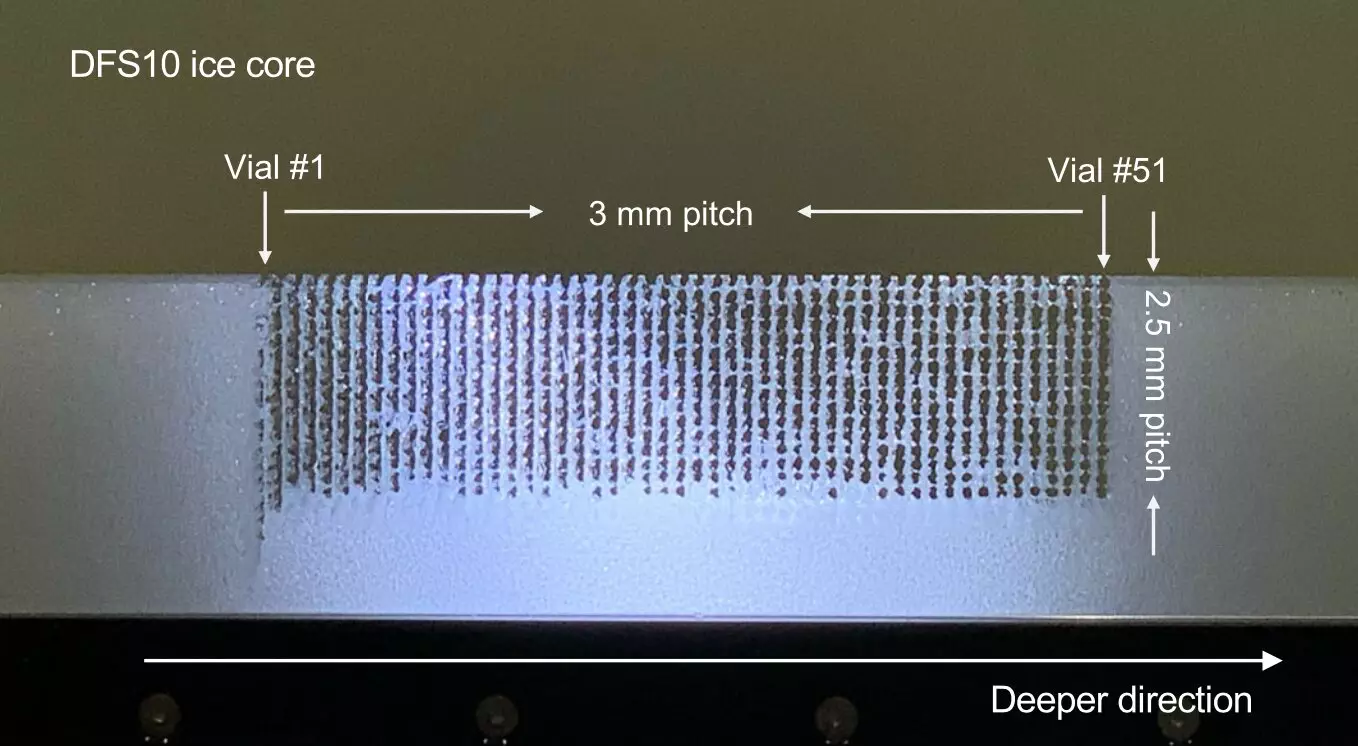In a significant step forward for climate change research, a team of researchers from the Astro-Glaciology Laboratory at the RIKEN Nishina Center in Japan has developed a groundbreaking laser-based sampling system. This innovative system allows for the study of ice cores taken from glaciers with an impressive 3-mm depth-resolution, which is three times smaller than existing methods. By utilizing this new technology, scientists can now detect temperature variations that occurred over much smaller periods of time in the past, enabling them to reconstruct continuous annual temperature changes from thousands to hundreds of thousands of years ago. The study, published in the Journal of Glaciology on September 19, presents a game-changing tool for understanding climate change in both the past and present.
Tree rings provide valuable insights into local climate conditions year by year, much like the growth of glaciers over extended periods. By analyzing cylindrical ice cores extracted from glaciers and taking samples at regular intervals, researchers can reconstruct continuous temperature profiles, allowing for the study of past changes in climate. However, when it comes to samples taken from deeper locations, where annual accumulation is often compressed to sub-centimeters, this becomes a challenge.
Presently, there are two standard methods for sampling ice cores. One method, with a depth-precision of approximately 1 cm, results in the loss of data from years with less than 1 cm accumulation and overlooks any significant climate events that acutely altered the climatic conditions. The other method offers good depth-precision but destroys the vital sample section required for water content analysis – the primary factor for inferring past temperatures. The introduction of the new laser melting sampler (LMS) addresses both issues, offering high depth-precision without sacrificing the critical isotopes found in water, which are paramount for accurately calculating past temperature variations.
The laser melting sampler features a laser beam delivered through an optical fiber with a special silver nozzle, allowing for the rapid extraction and collection of liquid samples in stainless steel vials. The researchers had to optimize three critical aspects of the process: the laser’s power output, the speed at which the nozzle is inserted into the core during the melting process, and the rate of vacuum extraction for the liquid samples. These optimizations prevented the laser from overheating, guaranteed the ice melted at the fastest possible rate, and ensured the meltwater maintained a stable temperature. By meticulously fine-tuning these variables, the researchers achieved optimal results.
As part of a proof-of-concept experiment, the team selected a 15-cm segment of a 50-cm Dome-Fuji shallow ice core from East Antarctica, taken approximately 92 meters below the ice surface. Using the new laser melting sampler, they successfully obtained 51 discrete samples at regular 3-mm intervals along the ice core segment. The stable oxygen and hydrogen isotopes present in the extracted meltwater were measured and compared to those obtained through traditional hand segmentation. The results were promising, with the laser-melting process preserving the sample integrity and producing accurate temperature measurements.
The newly developed laser melting sampler represents a significant leap forward in the field of ice core analysis. By allowing for a higher depth-resolution and preserving critical isotopes, this state-of-the-art technology opens up avenues for reconstructing continuous temperature profiles with unprecedented precision and accuracy. Researchers are now able to delve deeper into the climate changes of the past, shedding light on the factors that have led to the current state of our environment. Ultimately, this advancement paves the way for further understanding and combating the pressing issue of climate change, providing us with valuable insights into the Earth’s history and its future.


Leave a Reply